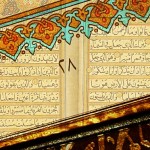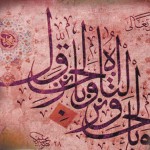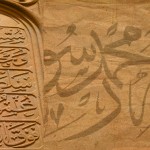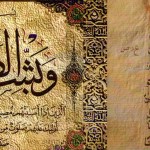Beauty of non-iconographic mentality in Islamic Aqeedah
Since the beginning of mankind’s “written” history, humans used every kind of symbols to communicate. Language, a set of symbols is one the communication tools. There are other mediums for communication, icons are the driving force behind the flow of communications. Without icons, human interaction through symbols would be very shallow and boring.
Humans tend to stick to icons for many reasons. Familiarity, sense of belonging to a group, deriving power from icons to rule and manipulate people can be considered among these reasons. All belief systems since the dawn of men have used certain icons to generate influence among followers.
However, Islamic aqeedah is definitely exception in this matter. In today’s world, Islam as religion is tend to be represented with a crescent moon in terms of semiology, but as far as Islamic history goes, there is no empirical evidence for this symbol.
There are no “iconographic” or visual remarks mentioned in Holy Quran, that are suggested to Muslims to follow or hold onto. We, Muslims are obliged to believe in Allah(j.j) while rejecting every other man-made symbol, system, icon or belief system.
In Holy Quran, we are told about the spiritual journey of Prophet Abraham(as) when he was searching for the Creator of Universe:
So also did We show Abraham the power and the laws of the heavens and the earth, that he might (with understanding) have certitude.
When he saw the moon rising in splendour, he said: “This is my Lord.” But when the moon set, He said: “unless my Lord guide me, I shall surely be among those who go astray.”
When he saw the sun rising in splendour, he said: “This is my Lord; this is the greatest (of all).” But when the sun set, he said: “O my people! I am indeed free from your (guilt) of giving partners to Allah.
“For me, I have set my face, firmly and truly, towards Him Who created the heavens and the earth, and never shall I give partners to Allah.” (Al-Anaam 6/76-79)
We have to note that throughout centuries, mankind has been busying his mind with many symbols and icons, mainly derived from celestial bodies. In these ayats, we can also observe that while searching for “Omni-potent” creator, one has to reject every other “entity” as well as “iconographic representation of such entites”
Many people prefer to hold onto icons in their belief systems so that such icons would act as intermediary to “Creator”. However, in this ayat we learn that;
Who is there can intercede in His presence except as He permitteth? (Al-Baqara 2/255)
Therefore, whether it makes us comfortable or not, or inspires us to feel closer to “heavens” Islam forbids every kind of icons and there is a great wisdom behind it.
In such mentality, one finds and starts knowing and learning truly about his Creator. When you stick to icons, you would settle for “enough knowledge” about Allah(j.j). On the contrary, when there are no icons to represent “Creator” one can think freely about Him.
Besides, there can be no icon or symbol ever, that can justify to represent or do just to symbolize Allah (j.j), who is ;
Say: He is Allah, the One and Only;
Allah, the Eternal, Absolute;
He begetteth not, nor is He begotten;
And there is none like unto Him. (Al-Ikhlas 112/1-4)








You must be logged in to post a comment Login